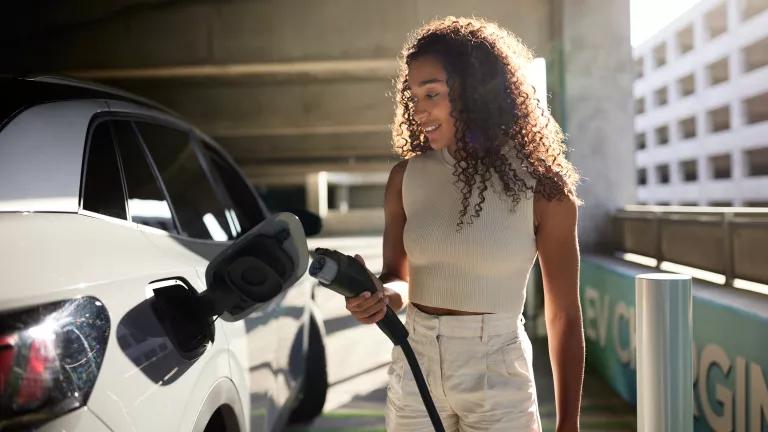EVs: Win-Win for the Environment and Drivers’ Wallets
Compared to a gas vehicle, an electric vehicle is not just better for the environment—it also helps you save money.

Buying an electric vehicle (EV) is an investment that starts paying off the moment its owner starts driving it. Indeed, a study by Energy Innovation has found that in most states, “financing and owning an EV is cheaper on a monthly basis than financing and owning an equivalent gasoline car.” This is a major reason that an increasing number of states are adopting California’s Advanced Clean Cars II standards, which will increase the number of new ZEVs on the road annually, and the Environmental Protection Agency (EPA) is establishing the strongest federal tailpipe vehicle standards, which are expected to be met in part by an increasing number of ZEVs—the federal government and these state governments understand that EVs not only zero-out pollution but also significantly reduce consumer transportation costs, the second largest household expense category.
EVs save their owners money because they tend to have much lower fuel and maintenance costs than internal combustion engine vehicles (ICEVs). An analysis by Consumer Reports surveyed nine of the most popular EVs on the market below $50,000 in 2019 and found that the average EV owner paid half as much for maintenance compared to ICEV owners and $4,700 less for fueling over the first seven years of ownership—the average price of residential electricity, adjusted for inflation, has been equivalent to a dollar per gallon for over 20 years.
As more utilities across the country adopt or propose time-of-use (TOU) rates, more EV drivers will be able to further reduce their fuel costs by charging their EVs at home at off-peak hours when rates are lower. With the $5 billion of funding from the Infrastructure Investment and Jobs Act (IIJA) dedicated to the buildout of 500,000 EV chargers, public charging will become more accessible and likely more affordable as well. Overall, the EVs’ lifetime ownership costs were “many thousands of dollars lower than all comparable ICE vehicles’ costs, with most EVs offering savings of between $6,000 and $10,000.” If EPA’s proposed standards are finalized, average lifetime fuel and maintenance savings of EVs will reach $12,000.
Unfortunately, some studies claiming that EVs are less affordable than ICEVs have received a lot of attention. These kinds of studies tend to focus on a narrow time period, such as a quarter year, and leave out factors integral to the total cost of ownership, such as maintenance costs. While the costs of operating an EV can be framed in these very specific ways to appear higher than those of operating an ICEV, these crafted comparisons do not reflect the full lifetime savings that can be achieved with the switch to an EV.
These specific cost comparisons tend to be generalized because they fit the increasingly outdated misconception that EVs are not cost-competitive with ICEVs. In fact, with price cuts from original equipment manufacturers (OEMs), tax credits from the Inflation Reduction Act, and a nearly 90% decrease in EV battery pack costs from 2008 to 2022, EV prices have dropped significantly and could potentially reach parity with ICEV prices as soon as this year. As of the date this blog is published, there are already 63 EV models offered and 59 upcoming models according to Atlas Public Policy, and many of the currently available EV models, such as the Chevrolet Bolt and the Nissan Leaf, have already reached price parity with or are even cheaper than comparable ICEV models. This does not even take into account the up to $7,500 of EV tax credits from the Inflation Reduction Act that lower the upfront costs of many EVs even further.
As EV upfront and lifetime costs continue to drop, it is only going to become more unequivocal that the transition to EVs is a win-win situation for both the environment and drivers’ wallets.



